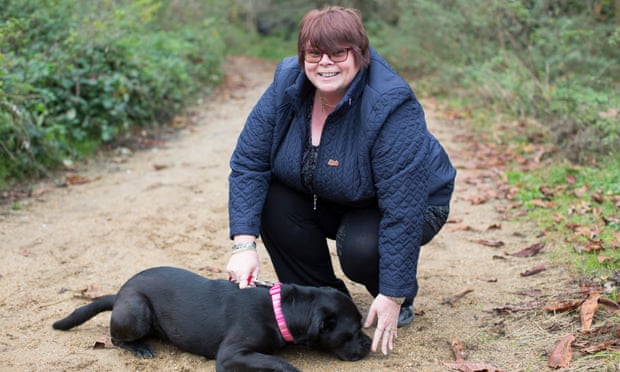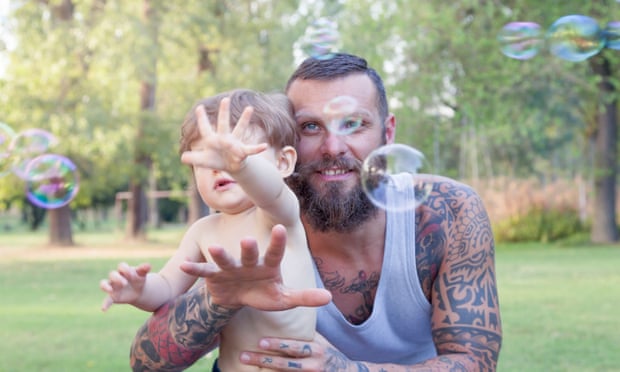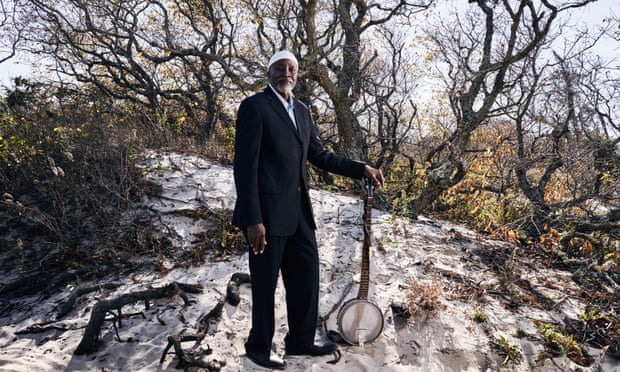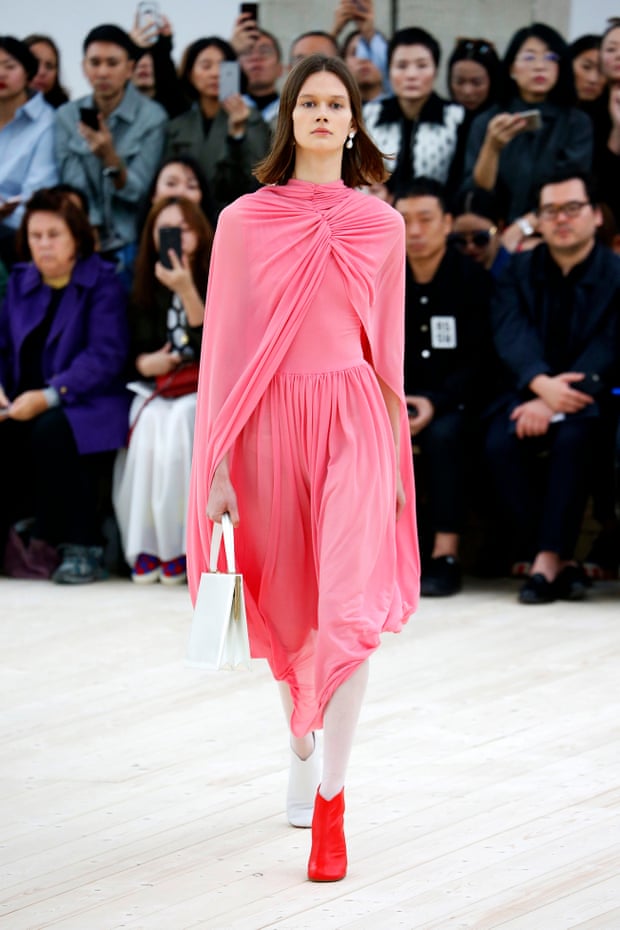
He first found fame on ‘The Undateables’ last year but since his appearance on the Channel 4 show, 27-year-old Tom Morgan has landed his first modelling job.
The popular programme showed Tom, who has Tourettes and Asperger’s, take part in an unsuccessful date due to a lack of self-confidence.
But, the rugby player isn’t letting it stand in the way of his career.
A brand that promotes body positivity and inclusivity for all men, retailer Jacamo have signed Tom to front its latest collection.
“We’ve been following Tom’s journey and have enjoyed seeing his confidence continue to grow,” says Jenni Bamford from Jacamo.
“Tom’s story is another example of how self-belief and tenacity really can contribute to a greater self-confidence.” Plus, “He looks great in the pictures.”
The TV star who dedicates his time to raising awareness of his conditions has recently set up a charity, Mentoring Plus UK and is also an ambassador for the National Autistic Society and State of Mind Rugby Union.
Nonetheless, Tom said he struggled to overcome initial nerves in front of the camera.
“I was pretty nervous as I’ve never done anything like this before, but it was great fun and modelling is definitely something I’d like to do more of,” he says.
“The Jacamo shoot has allowed me to continue to promote that, no matter what battles we may face, confidence is about being comfortable in your own skin.”

Meg arrives at Sue’s London home acting nervously, up and down from her seat, fussing around the lounge, following Sue into the kitchen as she clears dishes, and intermittently looking out of the window for who knows what. It’s not till the evening, says Sue, that Meg finally settles by the fire, head on paws, looking into the flames.
Dogs Trust – the country’s biggest dog welfare charity – always finds its charges a little anxious when they are rehomed. But, as they long for love and attention, any nervous energy is usually directed with delight into hours of games in the garden or long walks around the new territory they can call home.
Dogs such as Meg, though, are different. She’s not in the mood for games. And one would imagine she’s not really wanting a new owner. She is loved in an extraordinary way by her current one. But Meg is at Sue’s house today because her owner has been the victim of domestic abuse. Unable to take Meg with her to a refuge, she has not felt she could escape her abuser. Until now.
The Dogs Trust Freedom Project offers victims of domestic abuse – and their pets – a way out. When someone who is being abused goes into a refuge, the charity finds their pet a temporary retreat with a foster carer such as Sue. Weeks or months later, when the abuse victim has a new home, dog and owner are reunited.
Set up 12 years ago with the backing of Refuge and Women’s Aid, the Freedom Project recognises that dogs have been caught in the middle of abusive relationships and are often used by the abuser for coercive control – becoming the subject of emotional threats that usually suggest the dog will be harmed if the abuse victim leaves the house. “We know victims are often unable to admit what is going on, never mind being able to call on friends or family to help. They become isolated and feel trapped,” explains Amy Hyde, the Freedom Project coordinator.
The charity also knows the scale of the problem. While it has been able to help more than 1,200 dogs in London, Hertfordshire and Yorkshire (Es....... has just been added to the list), Women’s Aid says that, on average, police across the UK receive an emergency call relating to domestic abuse every 30 seconds.
In many cases, physical violence extends to the dog too. While campaigns (from Refuge’s 1in4Women to the domestic violence “gaslighting” storyline on Radio 4’s The Archers) have helped to put a spotlight on what happens to victims of domestic abuse, the effects on pets (witnessing the violence or being abused themselves) still goes largely unnoticed. But research shows that mistreatment of pets is often part of domestic abuse, and that a high level of pet abuse is committed in the presence of the victim as revenge or to control. Dogs Trust sees animals that have been beaten with their own lead, starved, choked or thrown against walls in homes where there is abuse. After their escapes, many owners tell the charity of how their pets tried to protect them, jumping between them and their abuser, one dog grappling a knife out of the hands of a man and so saving his owner’s life. Every time, these animals demonstrate the kind of love and loyalty that is hard to leave behind, however desperate an owner is to escape.
“The stories we hear of dogs’ bravery are heartbreaking,” says Sue. “But it’s the love the owner has shown the dogs that moves me most. If it was one of my daughters, I’d want them to leave no matter what, but these owners – mostly women – have stayed in a desperate situation because they fear for their dog. It feels like a complete privilege to be here for that woman and to look after the animal she loves while she gets back on her feet.”
“Foster carers like Sue expect the dog to be nervous and often scared of men,” explains Hyde. “We warn them that simple gestures like picking up a lead might be seen as a threat, rather than an invitation to walk and that as a result of what the dogs have been through, there may be issues – such as toileting – for the first few days. But the carers always say it’s the dogs who do take longer to settle that they love even more. It’s rewarding for them to see the dog come to trust people again and grow in confidence.”
“The first dog we fostered was really stressed,” says Sue. “Sam was a gorgeous labrador and would jump if you picked up a brush to sweep the floor. The first time we left him, we came home to find he’d soaked everything, tipping his water bowl over himself apparently and shaking all over the room.”
Another foster dog, a collie, didn’t settle at night, says Sue. “We could hear her paws tap-tap-tapping on our wooden floors as she walked around the house. She wanted to sleep with my daughter, head on her pillow and everything.” While Sue never meets or knows much about the owners, she’s allowed to communicate news of their pet via the Dogs Trust and, if she has worries, knows the charity is always contactable (its staff take the dogs to the foster homes, then visit regularly).
“The dogs soon settle,” says Sue. “After a couple of days, that labrador, Sam, was on my lap, head on my shoulder like a baby and fast asleep. He didn’t understand the concept of personal space. I remember thinking, sitting there, that there was so much I should be getting on with. But I didn’t want to move. I was in awe of how resilient he was after all he’d been through. He was lovely.
“My husband, Jason, is a big man and we always introduce dogs to him outside the house, and give them space and time to get used to him. He pretends to be less interested – you know, rolling his eyes when I say we’re fostering again. But then I come in and he’s cuddled up on the sofa with them, and I know he loves what we’re doing, too. Meg’s our third, and we’ve had no aggression from any of them. They want love. Just a lot of love.”
Sue admits it’s hard to let the dogs go. She says she answered an ad for fostering in response to her daughters – now 13, 16 and 18 – begging her for a dog. “We feel all the benefits of having a dog while helping someone else,” she says. “It’s hard to say goodbye, but our whole family is behind what we’re doing, and understand why we’re doing it. We know this has been and still is another woman’s best friend in every sense of the word. They mean the world to each other. The dog is just ours on loan.”
The owners often tell Dogs Trust they worry their pets won’t remember them. “But that never happens,” says Hyde. “Dogs might take a few minutes to clock what’s going on when they’re reunited – it’s like they’re pinching themselves it’s for real – but then they’re back in their owner’s arms. That will be Meg’s happy ending any time soon. It is always a great moment.”

Last week, Glamour magazine announced that it would be ditching its trademark handbag-size edition in favour of something bigger. Because, as publisher Condé Naste said, it recognises “that the print experience is now regarded as more luxurious and indulgent”. But it’s not just fashion magazines that are getting bigger, it’s iPhones, moons, coffee sizes and Trump’s plans for the US military.
Our post-venti landscape is reflected on the catwalk, with “the new proportion” possibly being the defining aesthetic choice of this year. Wide-legged, oversize trousers and jackets (kind of the sartorial bastard children of Stop Making Sense-era David Byrne), such as Céline’s Phoebe Philo, have dominated the autumn/winter collections and crept on to the high street. Tangentially, “lampshading” has altered the regular silhouette too.
The idea of supersize economics arrived in the 1960s, when David Wallerstein, the head of a Chicago movie theatre, realised that people would happily buy one huge box of popcorn for a small extra charge when they wouldn’t buy two smaller boxes, because that way they didn’t feel greedy. Although Morgan Spurlock’s 2004 film Super Size Me killed off McDonalds’ extra-large option, the concept still exists else in fashion, elsewhere in fast food and beyond.
This trend for bigger things could be seen as a modern version of the hemline index. During the US Great Depression of the 1930s, suits got wider (think: Al Capone’s double breasted jackets). Could the width of our clothes and the size of things be linked to the fact we are currently living in the age of uncertainty where big things are some sort of metaphorical safeguard against the unknown? It certainly feels like that.

Name: Papa
Age: In the English language, three or four hundred years old.
Popularity: Soaring, if you fit the right demographic.
Papa? Is not that a bit old-fashioned? Yes, it is. Google's Ngram Viewer According to, the peak year for usage of the word "papa" in literature was swift 1869. After that it went into decline, eventually being Overtaken by "dad" and "daddy" around 1970.
But you said it was Soaring . It is Soaring.
With whom? Think about it. "Papa" is an outdated term that was popular in the 19th century last, when men were rugged and bearded and ...
Oh, Goddamnit. Hipsters! That's right, it's hipsters. Hipsters have reclaimed the word "papa" and everything in the world is again bad.
Is this really happening? Sadly, yes. The Daily Beast just published a report about the resurgence of "papa". It's a great report, too, especially if you enjoy howls of rage Wordless screaming into pillows.
Why? Here's a quote: "Justin Underwood, a 34-year-old IT professional in Virginia and father to a three-year-old girl named Afton Love, refers to himself as a 'feminist papa bear' and thinks the 'dad' sobriquet is 'very bland and drab'. "
Oh, Jesus, where's my pillow? It's thought to be linked to the rise of "mama" as an identifier for Strongminded, progressive mothers who reject "mum" as too old-fashioned and suburban.
Even though, Arguably, the woman who Popularised the term more than anyone else in recent years was Sarah Palin? Well, yes. But we do not talk about that.
And "papa" is its male equivalent? Yes. And it's catching. One person interviewed estimates that half the children in his nursery school in Williamsburg, Brooklyn, call Their fathers "papa".
To play devil's advocate, does it really matter what people call Their parents? Shut up. You're worse than Hitler.
That's a little bit strong. Get out of my room, Papa! I hate you! I never asked to be born, Papa!
Do say: "Quinoa, be a good boy and fetch the small-batch chia pudding for Papa."
Do not say: "We all know that Papa John, perhaps the most famous Papa in the world, is a Koch Brothers ally who vocally opposes Obamacare, right? "R

I stopped speaking on my 27th birthday in 1973, because I found myself arguing all the time. After witnessing an oil spill in San Francisco Bay in 1971, I gave up using motorised vehicles and started walking everywhere as a statement about pollution. I lived in a small village on the west coast of America, where I kept getting into debates about whether one person could make a difference. I would rant and rave about how everyone should do what I was doing.
I used words to hide from other people, and from myself. I made things up: if someone told me they were going on a trip to Europe, I’d pretend I was going, too; I guess I had low self-esteem. I decided not to speak for one day, as a kind of gift to my community. My girlfriend thought I was doing a nice thing. When I woke the next day, I didn’t see any reason to speak, so I didn’t. When others spoke to me, I mimed that I was being silent. They were thrilled.
For the first week, everyone thought it was fun, and I realised I was actually listening for a change. I had always been so used to thinking about what I was going to say next.
After a few weeks, people started getting worried. My girlfriend wanted me to stop. I sent a letter to my parents in Philadelphia, telling them I hadn’t spoken for three weeks and that I was thinking of not speaking for a year. My dad got on the next plane. They thought I’d been taken over by a Californian cult.
When he arrived, he told me to get in the car to go to his hotel, but I shook my head and walked my fingers in the air. When we got into his hotel room, he said, “OK, you can talk now.” But when I still wouldn’t, he was beside himself. This went on for years.
I liked not speaking. It gave me peace. People ask if I spoke to myself, but why would I? I’d just have complained when I had no one to blame but myself. I did slip up a couple of times. After about six months, I bumped into someone in the grocery store and said, “Excuse me.” My laugh was completely silent; friends said that was the weirdest thing. My girlfriend came around to understanding why I was doing it, but when I decided to walk from California to Oregon to explore the wilderness, we went our separate ways.
On the 10th anniversary of not speaking, I spoke for a day. I didn’t want it to feel as if it wasn’t a choice. I was in California and I called my parents. My mother picked up and thought it was my brother messing around. I had to prove it was me by telling her something only we knew: I reminded her of when I walked to meet her and my dad in San Francisco and we were in an elevator and she said, “If you were really serious about this walking, you wouldn’t ride in an elevator.”
During this time, I gained a bachelor’s, master’s and PhD in environmental studies. I learned some sign language to help me communicate, and I walked across the United States, playing my banjo, and became known as Planetwalker.
After 17 years of not speaking, I felt I had something to say. People came to hear me in a hotel in Washington DC. My first words were, “Thank you for being here.” But I didn’t recognise my voice and just started laughing. I saw my dad sitting in the audience, looking at me like, “Yes, he really is crazy.” Having listened to thousands of people, I realised we had a narrow view of what the environment is. It’s more than saving trees; it’s about how we treat each other, and that includes gender and economic equality and civil rights.
I met my wife just after I started speaking again and, because my PhD focused on oil spills, the US Coastguard hired me after the Exxon Valdez disaster. Now I teach in schools and give talks around the world. I started using vehicles again in 1995, after 22 years, when, while walking through Venezuela to Brazil, I realised that walking had become a prison for me. I still practise being silent every morning, and sometimes don’t speak for several days at a time. It reminds me to listen properly; not to judge what I think I’m hearing, but to try to understand what people are really saying.
Read more at: evening dresses nz
French investigators are examining footage from surveillance cameras to try to identify five armed men who are still on the run after robbing the reality TV star Kim Kardashian West of an estimated €10m (£8.8m) in jewellery in one of the country’s biggest heists in decades.
Kardashian West was in Paris for fashion week when a gang of masked men wearing jackets marked “police” entered the luxury apartment building where she was staying at 2.30am on Monday.
Three men tied up the receptionist downstairs and stood guard by the door. The two others went up to Kardashian West’s bedroom, where she was lying down. They held a gun to her head, tied her up in the bathroom and escaped with a vast haul of jewels thought to include her €3.5m wedding ring.
The attack lasted only six minutes before the men escaped on bicycles.
Kardashian West’s stylist, who had hidden in a bedroom during the attack, untied Kardashian West and raised the alarm.

photo: evening dresses online
Crucially, Kardashian West’s personal bodyguard, Pascal Duvier, who had trailed her to all events during fashion week, was not present during the attack. Kardashian West had “loaned” him to one of her sisters who had gone out to a nearby Paris nightclub. Called by the stylist during the attack, the bodyguard reportedly rushed to the scene, arriving minutes after the gang had fled.
The fact that the bodyguard was not present when the gang struck has raised speculation in Paris that the thieves had either been trailing and observing her extremely closely, or they had been tipped off by someone within her entourage that Duvier was not present.
Paris prosecutors declined to comment on whether the robbers might have received help from inside her circle.
Kardashian West reportedly begged the armed thieves not to kill her because she had children, according to the celebrity site TMZ.
The attack happened at an exclusive, private apartment building known as a “no address” site, where celebrities visiting Paris often rent sumptuous suites. The main door to the street was unmarked, giving the guests privacy, but the site was thought to have far less security protection than the city’s luxury hotels. The rest of the Kardashian family were staying at a luxury hotel.
Karl Lagerfeld ticked off Kardashian West on Tuesday for flaunting her wealth and for staying in that type of building.
“You cannot display your wealth and then be surprised that some people want to share it with you,” the fashion designer told Agence France-Presse after his Chanel show.
Lagerfeld had written Kardashian West a note on Monday saying: “Dearest Kim, we are all with you”, but he criticised her for showing off her jewellery to her 100 million-plus social media followers. “If you’re that famous and you put all your jewellery on the net, you go to hotels where nobody can come near to the room,” he said.
Mathieu Kassovitz, the French actor and director who shot to fame with the French film La Haine, sparked controversy on social media after the robbery and Kardashian West’s swift return to the US by tweeting: “Proud to be Parisian” and refusing to delete it.
Philippe Poutou, a car-worker and anti-capitalist presidential candidate in France, tweeted after the heist: “Nine million euros in jewellery in her bedroom? The redistribution of riches is urgent. It has seemingly begun.” He then deleted the tweet, saying he agreed with the criticism he had attracted.
The Kardashian West robbery was the biggest jewellery theft from an individual in France for more than 20 years.
Johanna Primevert, the chief spokeswoman for the Paris police departmentsaid it was “very, very rare” in the city for robbers to pose as police and target a private apartment.
Jeanne d’Hauteserre, the mayor of Paris’s 8th arrondissement, where the attack took place, told BFMTV she suspected Kardashian had either been followed or there had been some kind of tipoff that led to the attack.
Read more: white formal dresses
Was it the proximity to Halloween? The skies turning from furnace-hot sunsets to totes emosh Bronte dark? Who knows, but London fashion week had traded in florals and stateliness for horror-movie dread and creaking-floorboard queasiness. Here are the unexpected influences from LFW ...
Toddlers and Tiaras
With the PA playing A Whole New World from Aladdin, the chairs decked with packets of Turkish Delight and tinsel chandeliers decking the venue, Ryan LO’s show was carved up like a three-year-old’s birthday party. The clothes: oversize bejewelled pirate hats, dresses in chocolate-box golds, pink and orange tiered like a showstopper from Bake Off, silk boiler suits decorated with genie lamps spoke to the idea of kids hitting the dressing-up box hard. While certain outfits, such as the white, tiered doily-like dress worn by a Bambi-ish model with zealishly applied blue eyeshadow and exaggerated, Joan Crawford-ish eyebrows suggested something more specific and creepy: the child beauty pageant show Toddlers and Tiaras.
River Phoenix
The set for Ashley Williams was a tone poem to analogue teenage dreams. Serial Mom was on the telly, a JLS poster hung under a TV chair and a Tracey Emin-like bed sat catastrophically in the middle littered with empty bottles of gin, whisky and gin. It was perfect. The clothes spoke to a sense of adolescent awkwardness and dislocation pinned to her muse, River Phoenix. In the show notes, Williams was said to have “got lost in the place between reality and fantasy that exists in the teenage imagination,” but, she continued “the thing about River was, he just got it.” Phoenix was the oldest of his clan and the logo “First Born” re-appeared on the clothes, written in 80s Kerrang!-font. Of the other clothes, there were lilac pyjamas decorated with angel face prints and fringed with green, oversize denim dungarees worn with diamond buckled shoes, homely grey knitted jumpers featuring a Battenberg-like print, and bags featuring stuffed toy bears and cats straight out of Sonic Youth’s Dirty album sleeve.
Pennywise
Fashion’s obsession with the ruff and the puff shows no sign of stopping. Molly Goddard, J.W.Anderson and Preen were just some of the labels that incorporated it into their collections. While Hannah Weiland’s Shrimps took elements from Tim Curry’s turn as Pennywise in Stephen King’s IT, a masterclass in camp creepiness. The presentation featured a childlike mise en scène with diamond-encrusted sea shells, old-fashioned pyjamas worn with night bonnets and delicately luxurious clown ruffs, fringed with gold and black.
Read more: evening dresses online

Fashion is a never ending concept for women. There are many dresses which are popular among them which are not considered as a part of the latest fashion but they come in the general wearing for women. They can wear these dresses normally at any function or in daily use as well. However, it all depends upon the quality of stuff they are buying. It is always advised to buy ladies dresses from a structured shop or market where clothing is very popular. These days, physical markets are offering different styles and designs of dresses that are catering requirements of ladies. With the increasing demands, there are many companies
Delivering quality stuffs of ladies dresses competing each other.
There are unlimited options available in floral dresses so that women can select section Their favorites Their dress and according to size. Based on their selection, the dress will be delivered to their address. Also, these floral dresses online comes with great demands during summers which allow online vendors to come up with different options.
Printed dresses add some texture on the grace of a woman. Print is according to the fashion and it can be anything which a woman loves. Just as other dresses, Block printed dresses are also very common wearing apparel among women. These dresses add some glow to their face and offer a new look to them. Buy these dresses as they are easily available and comes with different patterns too. The best part about block printed dresses are that girls and women of every age can wear these dresses. It is also very common so different merchants are offering at different prices. Dresses under this context are great to wear. Go for the printed dresses and allure others with confidence.
Read more at: formal dresses online